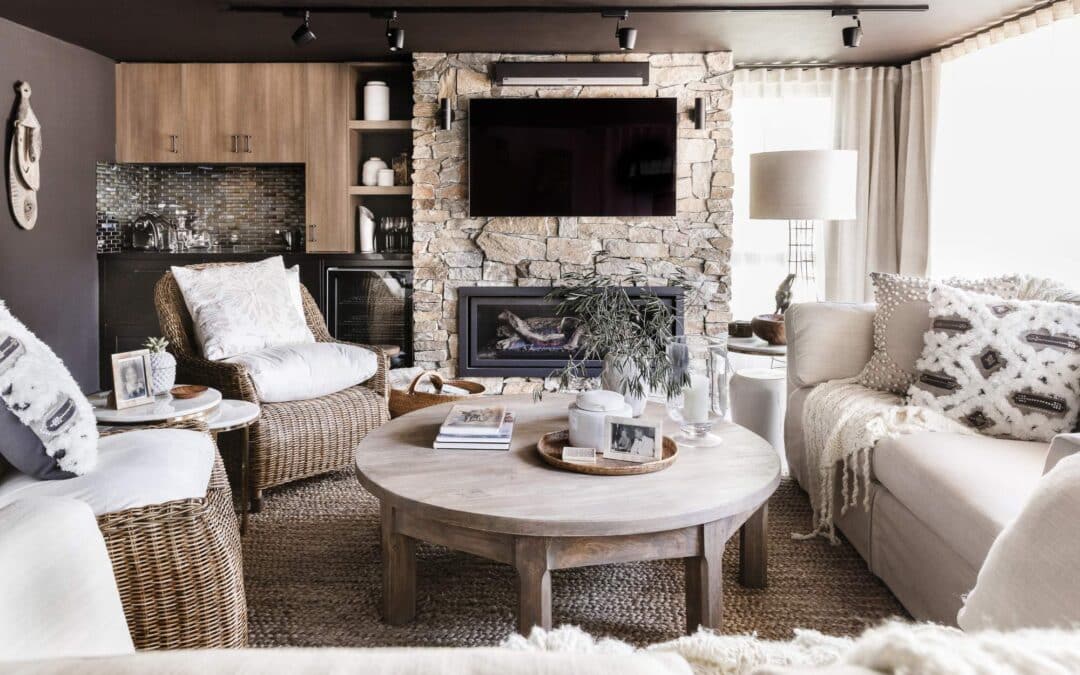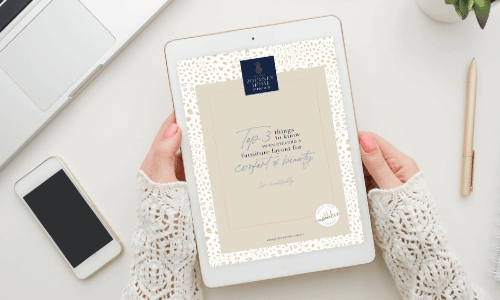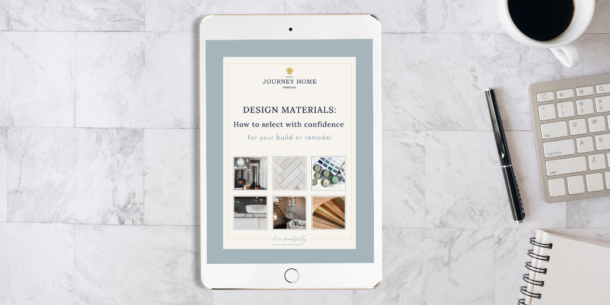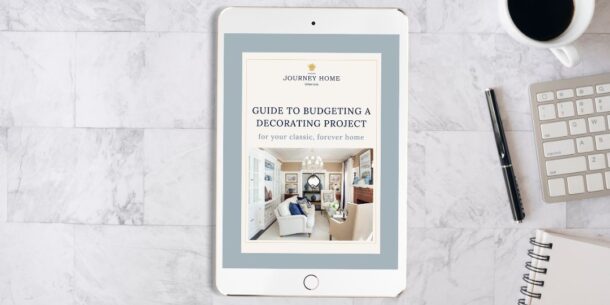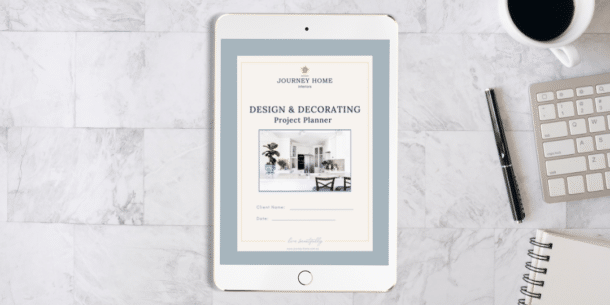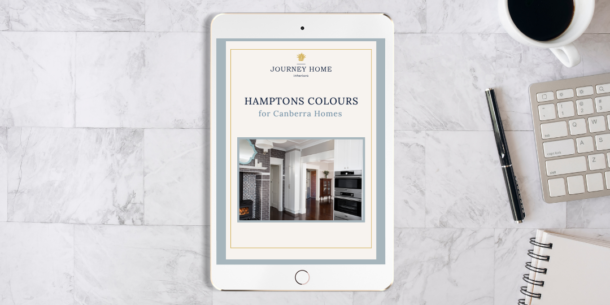The terms interior design and interior decoration are often used interchangeably. Although there can be some overlap and intersection between these roles, there are distinctive differences. Understanding these can help you choose the right professional for your interior projects. Let’s look at the distinctions between interior design and interior decoration and the key differentiating factors that set them apart.
Interior Design: Function, Space Optimisation & Structure
1. Space Planning: Interior designers have an expert understanding of spatial and strategic planning. Their main role is to consider how ergonomics, the flow of movement, and layout impact the functionality of a space. Essentially, they optimize interior blueprints through the application of good design.
2. Structural Changes & Collaboration with Contractors: If your project involves architectural and/or structural changes to the bones of your home, whether that be a kitchen renovation, the building of a new room, the removal of a door or window, the redesign of a bathroom layout, or the construction of built-in custom joinery of any kind – these projects fall under interior design. If you need to engage other trades to complete the job, this is another indicator that it’s likely interior design. Interior designers often collaborate with architects, builders, and other contractors to complete a project.
3. Compliance: Interior Designers have knowledge of structural integrity and building compliance codes.
4. What to Expect: When you engage an interior designer, they will guide you through the process of designing your home. An interior designer presents you with a comprehensive specifications package that outlines the design brief, including design concept and development. It includes the exact specification and positioning of elements, materials, and finishes. It may include drawings, floor plans, and a physical materials board that details the exact tiles, floorboards, splashbacks, appliances, and hardware specified. It also includes directional information for contractors on the correct application and installation of an element. Essentially, at the end of the design phase you will have documentation that serves as a blueprint for builders and contractors to execute the concept and as a resource for the client to understand what the finished design will look like.
Interior Decoration: Adding Colour, Style & Ambiance
Unlike interior design, which involves structural modifications, interior decoration is concerned with the finer details that contribute to the overall finishing touches and comfort of a room. When creating a new space, the interior designer is required to measure, space plan, and execute the built-in aspects of the design. The bones, if you like, although if you stopped at this point in the project, the interior would look unfinished and will not reach its full potential.
Many people decide to save money by decorating themselves, or more accurately, placing the same furniture they had pre-modifications, which most times detracts from the money spent and modifications made. This is where decoration truly shines. The interior decorator solve issues such as how to arrange your furniture for maximum function and will dress the room to fully optimize the design and highlight the features of the room.
Take a look at the following three images. The first is before, the second is after the interior design has been completed, and the third is after decoration. Through this visual timeline, you can see the impact that the decoration element has on completing a project to its full potential.
BEFORE: (click image to enlarge)

COMPLETION OF INTERIOR DESIGN: (click image to enlarge)
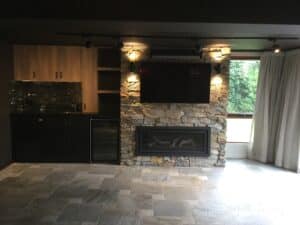
COMPLETION OF DECORATION: (click image to enlarge)
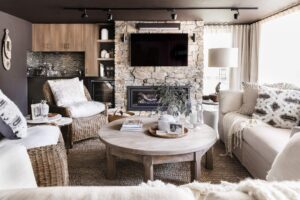

A note on this project: Inspiration for the rumpus room came from our client’s collection of Papua New Guinean artifacts, which influenced our palette, décor, and many furnishings. We made the fireplace a stunning focal feature and layered custom, classic elements and warm tones for that effortlessly collected look. For a more detailed look at this project head here.
In summary, interior decorators:
1. Add Ambiance: Interior decoration comes after architectural and structural changes are complete. Its key function is to enhance the visual appeal of an interior by applying a cohesive colour palette and configuring meaningful style direction.
2. Select Textiles, Décor & Colour Palettes: The selection of decorative elements and an eye for detail is the honed skill of an interior decorator. They will recommend an array of textiles, accessories, art, curtains, rugs, and other decorative elements in line with a client’s style or vision. They also consider the flow of movement and may alter an existing furnishing layout or recommend new furnishings to improve spatial flow.
3. Add the WOW factor: Essentially, the styling of a space is what brings the design concept to life and adds that WOW factor on entry. Without decoration, the room is much like a blank canvas, waiting for the masterpiece to be created.
The Intersection of Design and Decoration
While interior design and interior decoration are distinct disciplines, there are instances where the roles overlap or intersect. Decoration services may occasionally oversee the application of new floorboards, carpet, paint, or wallpaper, which are more design elements. Similarly, an interior designer may decorate to complete the project through to soft furnishings, upholstery, bed linen, throws, and décor objects. Many interior designers do both but these are categorised as different services.
A rule of thumb is this – Whether you are working with a designer, decorator, architect or builder taking a a wall out nearly always needs an engineer to give it the tick and set the parameters for support. Interior designers are focussed on aspects of your home that your builder will build into it. Whilst decorating focusses on furnishings. The term painter decorator is kind of an old English term harking from older times when painters applied wall paper, not all of them do these days its become a specialised skill
A decorators focus is the beautification, styling and optimisation of the homes design features and elements. A decorator is highly skilled at changing the layout of movable furnishings, applying colour schemes, placement and sourcing of furniture, fabrics, rugs, art, and décor to bring the interior to life.
Key Differentiators
While decoration is about the contents that convey a specific style or feel, design is the structural elements that surround the decorative contents. Think of it this way: if your house were flipped upside down, the decoration would tumble out with the curtains hanging on for dear life – but the design elements would remain intact. To further differentiate the two, consider this insurance analogy: interior design changes may influence building insurance, while interior decoration tends to affect contents insurance.
Choosing the Most Suitable Professional for Your Project
I hope you have a better understanding of the distinct but equally vital roles that design and decoration play in the creation of interior spaces. Whether you’re considering a renovation project or simply looking to invigorate your existing style, understanding the distinctions between these disciplines can help guide your decision on which professional you need. We always recommend the full service because, from experience, we know that, while it is an investment, we live by the ‘do it well once’ principle and know completing the design and decoration will save you money in the long term.
Here at Journey Home, we offer varying custom interior design and decoration services and cater to all budgets and project sizes. We are known for our timeless, classic design and decoration aesthetic and specialize in heritage homes. For more information, book a call with me so I can recommend the best service option for your design or decoration aspirations.

